Western Region: Oregon: USA
 With nearly 30 million acres of trees, Oregon is the country’s leading lumber producing state. During the summer, visitors to Oregon’s Sea Lion Caves can watch sea lions frolic and play. The visitors stand and watch the sea lions from a cliff that overlooks rocks on which the sea lions play.
With nearly 30 million acres of trees, Oregon is the country’s leading lumber producing state. During the summer, visitors to Oregon’s Sea Lion Caves can watch sea lions frolic and play. The visitors stand and watch the sea lions from a cliff that overlooks rocks on which the sea lions play.
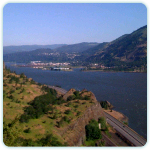
Crater Lake National Park
Travel to the deepest and one of the bluest lakes in the United States for snowshoeing and other winter fun. Crater Lake is the deepest (1,943 feet) and probably the bluest lake in the United States and is set like a sapphire in the bowl-shaped caldera of old Mount Mazama, a volcano that erupted and collapsed nearly 7,000 years ago.
Traces of past volcanic activity can be seen at The Pinnacles, reached by Sand Creek Highway, a seven-mile paved road passable from late summer until heavy snow. These pumice and scoria formations, 75 to 100 feet tall, rise like an army of obelisks from a 200-foot-deep canyon.
Some 30 trails (ranging from less than a mile to 35 miles) crisscross the park. Hikes up Watchman Peak and Mount Scott provide the best views of the lake. There are two campgrounds, at Mazama and at Lost Creek, both accessible by road from Rim Drive. And with a permit you can camp in the backcountry.
Crater Lake is particularly beautiful in winter and, despite an annual snowfall of 533 inches, easy to visit. The road is kept clear, and a ski trail circles the crater rim. On weekends from Thanksgiving to April, you can join snowshoe hikes led by a park ranger. -Park and visitors center open year-round. www.nps.gov/crla (541) 594-3000
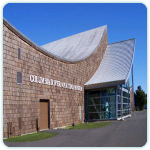 Columbia River Maritime Museum
Columbia River Maritime Museum
For five miles its foghorn could cut through the heavy mist, heralding the way home for bone-tired sailors. The bright beacon of the lightship Columbia was a comforting sight for seamen approaching the mouth of the Columbia River, known for its danger to ships.
The first lightship on the Pacific Coast began its tour of duty in 1892. The last Columbia lightship to be in active service was replaced in 1979 by an unmanned navigational buoy of heroic proportions, measuring 40 feet wide by 86 feet high. Both floating aids are now on display in this museum.
Two hundred years of Pacific Northwest maritime history are explored here, with the powerful waterway visible through the large windows of the wavelike structure. Interactive exhibits allow people to see what it’s like to pilot a tugboat, engage in a Coast Guard rescue on the river bar, or go salmon fishing in Astoria.
You can even clamber up to the bridge of a World War II naval destroyer, the USS Knapp. Open year-round; closed Thanksgiving and Christmas. Admission charged. www.crmm.org (503) 325-2323
Historic Columbia River Highway State Trail 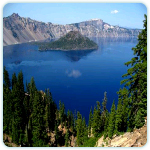
Called the king of roads, this expansive thoroughfare travels east-west through the Columbia River Gorge. Built between 1913 and 1922, this road was America’s first scenic highway and was also the first modern highway in the Pacific Northwest.
Running along the south side of the Columbia River, it was designed to be in harmony with nature. Since the mid-1980’s more than 10 miles of abandoned highway have been restored as pedestrian and bicycle paths known as the Historic Columbia River Highway State Trail.
You pass between two climate zones in the Twin Tunnels portion of the trail, between Hood River and Mosier. Leaving the car allows you to take a more leisurely look at the Ponderosa pine, moss-covered rocks, ferns, and wildflowers.
The gorge itself is among the most awe-inspiring sights in the United States. Open year-round. Day-use admission charged per vehicle. www.oregonstateparks.org/park_155.php (800) 551-6949
Thompson’s Mills State Heritage Site 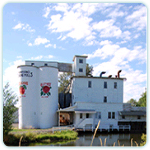
A five-story 19th-century grain mill is at the heart of this 20-acre heritage site in the Willamette Valley.
Dating from 1863, this oldest water-powered mill in Oregon was a regular destination for rural families who came with their grain crops and left with bags of flour for the coming months.
The mill also produced its own brands: Thompson’s Best, Cream of the Valley, and Valley Rose. On guided tours led by rangers, visitors view the Calapooia River (the still-operating mill’s power source), antique milling machinery, four silos, grain elevators, and a carpentry shop.
They also pass the Queen Anne – style millkeeper’s house, built in 1904. Open daily, weather permitting. www.oregonstateparks.org/park_256.php (541) 491-3611
Smith Rock State Park 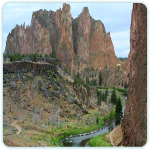
Smith Rock is known as one of the world’s most popular rock-climbing destinations. The keynote here is color: 623 acres of spectacular sandstone formations—boulders, cliffs, crags, and pinnacles—in magnificent pale yellows, burnt reds, rich greens, and purples that change with the shifting sunlight.
The Crooked River, a ribbon of blue, twists among them. Some speculate that the park was named for the man who discovered it, John Smith, a Kentuckian who came to Oregon in the 1850s and rose to political prominence.
Picnic sites are scattered throughout the park. Several paved pathways lead from the parking lot to the river’s edge and across a footbridge, where a network of trails spreads out among the formations. Open year-round. Day-use admission charged per vehicle. www.oregonstateparks.org/park_51.php (800) 551-6949
Sumpter Valley Railway
Travel back to the glory of eastern Oregon’s turn-of-the-century lumber and mining industry aboard the open-air 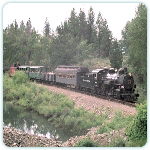 cars and original caboose of this restored narrow-gauge railway, driven by an authentic wood-burning Heisler locomotive.
cars and original caboose of this restored narrow-gauge railway, driven by an authentic wood-burning Heisler locomotive.
The Sumpter Valley Railway Company, started in 1890 by lumber magnate David Eccles, was a highly prosperous operation by the time its tracks were extended to the Sumpter gold mines in 1896.
However, during the 1930’s business declined, and in 1947 the railroad, known as the Stump Dodger, ceased operation. Since 1970 local volunteers have been restoring the track bed and offering rides through the picturesque countryside.
Occasionally a run is attacked by “bandits,” provided by volunteers, who add to the colorful illusion of the Old West. While you’re waiting for the trip to begin, browse through the historic photographs and railroad memorabilia in the depot’s museum or visit the engine cab, where the crew is happy to explain how the steam locomotive works. Open weekends Memorial Day–Sept. Admission charged. www.svry.com (541) 894-2268
